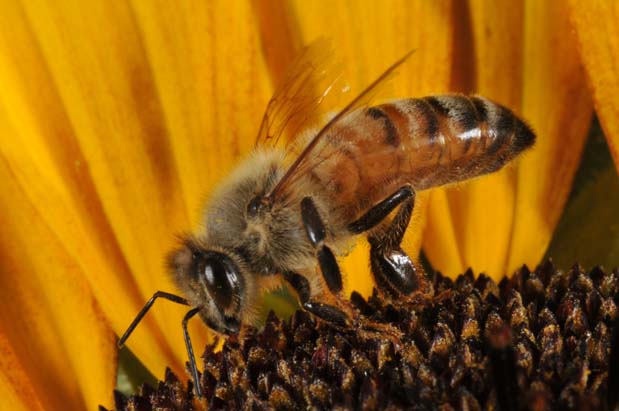

|
|
Honey Bee adult
(John Obermeyer, Purdue University) |
|
Common Name: Honey Bee - adult
See also: larva | benefit Scientific Name: Apidae: Apis several species Status: beneficial pollinators and honey producers Beneficial Stage: adult Biology: Honey bees are truly social insects. A mature colony of honey bees generally contains one queen (a fertile female), some drones (fertile males), and many workers (sterile females). Most people recognize honey bees. Eggs are laid singly in a wax honeycomb, that is produced and shaped by the worker bees. Worker bees perform many tasks including; cleaning the hive, protecting the colony, feeding the larvae, and collecting pollen and nectar. Honey is made when the nectar and sweet deposits from plants and trees are gathered, modified, and stored in the honeycomb cells as a food source for the colony. To defend themselves and their colony, honey bees have the ability to sting and inject venom into intruders. While they do this only as a way to defend themselves, the sting can be quite painful. |
 |
||||||||||||||||
|
|
|||||||||||||||
|
Purdue Extension Entomology, 901 West State Street, West Lafayette, IN 47907 USA, (765) 494-4554 Department of Entomology | College of Agriculture | Extension © Purdue University | An equal access/equal opportunity university | Integrity Statement | Copyright Complaints | Maintained by ENTM IT Trouble with this page? Disability-related accessibility issue? Please contact us at entmwebmaster@purdue.edu so we can help. | ||||||||||||||||
